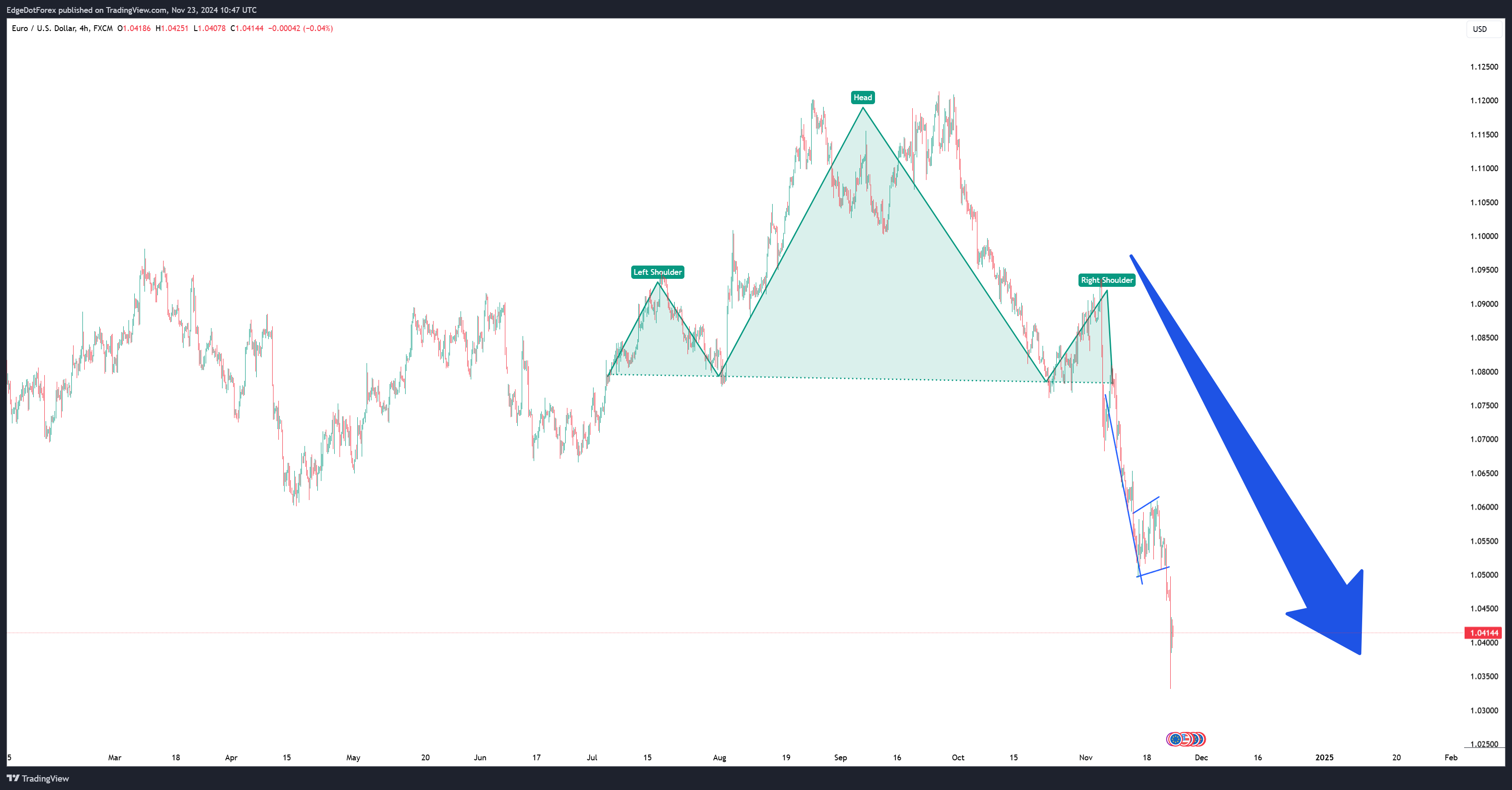“As a starting point to do a
deal of this type, you need a
technology framework,” Richard Elston, CMC’s Group Head of Institutional Sales, said on the broker’s agreement with Revolut, adding: “We also drew a schematic of what we felt could work and [what]
needed enhancement. But you’ve got to have a good, solid starting point.”
In June this year, CMC Markets partnered with Revolut
to make CMC’s contracts for difference (CFDs) available via the neobank’s app.
Finance Magnates recently sat down with Elston and Michael Bogoevski, who is the Head of Institutional ANZ at CMC Connect, to discuss the deal and find out what the future holds for the 35-year-old
firm.
Revolut recently launched a new app, Revolut Invest, offering CFDs in three European Union countries. The fintech also has plans to expand the services to other countries in the bloc by the end of this year.
“Make Sure That the Technology Works”
The deal could offer a
blueprint for CMC in the future, according to Elston. “I think it’s exemplary
of where we are going, and we will see more deals of that particular type and
style,” he commented.
Before CMC and Revolut sealed their
deal, the two companies had to undergo technological due diligence, which
Elston described as “a process of walking with one another, hand in hand. Sit
down, get down to the nitty-gritty, and understand.”
“If that due diligence had not been successful, we
simply wouldn’t have gone ahead,” he added.
Expanding on the initial stages of the landmark
deal with Revolut, Elston explained that “there were three elements. First, you
need to be able to access the markets that they demand. The second part is
definitely technology, which is a major component. Finally, there’s the legal and
contractual element.”
But ultimately, he said, “you’ve got to make sure
that the technology works. That’s probably the biggest part of the equation.”
“APAC Is a Key Contributor”
Though headquartered and listed in the United
Kingdom, CMC has expanded its presence in the Asia-Pacific (APAC) region in
recent years. In fact, its net operating income in Australia surpassed the
figure generated in the UK in the year to 31 March, according to the company’s
2024 annual report.
CMC generated
£332.8m in overall net operating revenue in fiscal 2024, of which
£109.4 million (33% of the total) came from Australia, while the UK contributed £92.3 million (28%) and the rest came from “other countries”, according to the report.
“APAC is a key contributor,”
said Sydney-based Bogoevski, CMC’s head of institutional sales for Australia
and New Zealand – two countries which, alongside Canada, Singapore and China,
form part of CMC’s APAC region. “A strong driver has been the premium space,”
revealed Bogoevski. “CMC in Australia and in APAC has a very strong position
regarding premium and high-net-worth individuals. We generally are the leaders
in market share when it comes to that. Another key component is the
stockbroking element. We are the second-largest online broker in Australia”.
A key chapter in CMC’s growth
story was its white-label stockbroking partnership with Australia and New
Zealand Banking Group (ANZ), which was implemented in 2019 and involved the
migration of more than 500,000 clients to CMC. This partnership marked a turning
point, according to Bogoevski.
Before the ANZ deal, he explained, CMC “had a
retail business, and we were offering white-label solutions to second-tier
banks”. But ANZ, a tier-one bank, was a step up. “That deal had 200 partner
clients attached to the retail book… At peak, we had five white-label deals,
which is pretty much the majority of the Australian stockbroking market”.
“We Build for Institutional First”
At present, CMC’s revenue is more
or less evenly distributed between its institutional, premium and retail clients.
But in the future, the institutional business could take on even greater
importance according to Bogoevski and Elston.
“Strategically, in time, we
would like a 50:50 or more ratio,” said Bogoevski on the idea that the
institutional side of CMC could eventually account for at least half of the
company’s total revenue. “That’s the notion of where CMC is going for the next
five or ten years.”
The company is, Bogoevski suggested,
at an “inflection point”. The “concept”, as he elaborated, is that “if
you can solve for the institutional market, you can solve for anyone.” Put
another way, he said, “if you can handle institutional, you can handle the
premium sector, and then you can handle retail from there. You get this
trickle-down effect.”
Adding to this vision of
CMC’s future, Elston commented: “From a global perspective, B2C is what we’re
made from. But simultaneously, B2B is very much in our focus. We build for
institutional first, and then it filters down. Hopefully the benefits of that
are reaped by our individual client base.”
In late 2021, CMC revealed that
it was considering separating its leveraged and
non-leveraged businesses,
but according to Elston that is no longer a pressing concern. “It’s not
something to focus on,” he said. “Further technological growth and giving
clients access to even more asset classes – those are our current objectives.”
“As a starting point to do a
deal of this type, you need a
technology framework,” Richard Elston, CMC’s Group Head of Institutional Sales, said on the broker’s agreement with Revolut, adding: “We also drew a schematic of what we felt could work and [what]
needed enhancement. But you’ve got to have a good, solid starting point.”
In June this year, CMC Markets partnered with Revolut
to make CMC’s contracts for difference (CFDs) available via the neobank’s app.
Finance Magnates recently sat down with Elston and Michael Bogoevski, who is the Head of Institutional ANZ at CMC Connect, to discuss the deal and find out what the future holds for the 35-year-old
firm.
Revolut recently launched a new app, Revolut Invest, offering CFDs in three European Union countries. The fintech also has plans to expand the services to other countries in the bloc by the end of this year.
“Make Sure That the Technology Works”
The deal could offer a
blueprint for CMC in the future, according to Elston. “I think it’s exemplary
of where we are going, and we will see more deals of that particular type and
style,” he commented.
Before CMC and Revolut sealed their
deal, the two companies had to undergo technological due diligence, which
Elston described as “a process of walking with one another, hand in hand. Sit
down, get down to the nitty-gritty, and understand.”
“If that due diligence had not been successful, we
simply wouldn’t have gone ahead,” he added.
Expanding on the initial stages of the landmark
deal with Revolut, Elston explained that “there were three elements. First, you
need to be able to access the markets that they demand. The second part is
definitely technology, which is a major component. Finally, there’s the legal and
contractual element.”
But ultimately, he said, “you’ve got to make sure
that the technology works. That’s probably the biggest part of the equation.”
“APAC Is a Key Contributor”
Though headquartered and listed in the United
Kingdom, CMC has expanded its presence in the Asia-Pacific (APAC) region in
recent years. In fact, its net operating income in Australia surpassed the
figure generated in the UK in the year to 31 March, according to the company’s
2024 annual report.
CMC generated
£332.8m in overall net operating revenue in fiscal 2024, of which
£109.4 million (33% of the total) came from Australia, while the UK contributed £92.3 million (28%) and the rest came from “other countries”, according to the report.
“APAC is a key contributor,”
said Sydney-based Bogoevski, CMC’s head of institutional sales for Australia
and New Zealand – two countries which, alongside Canada, Singapore and China,
form part of CMC’s APAC region. “A strong driver has been the premium space,”
revealed Bogoevski. “CMC in Australia and in APAC has a very strong position
regarding premium and high-net-worth individuals. We generally are the leaders
in market share when it comes to that. Another key component is the
stockbroking element. We are the second-largest online broker in Australia”.
A key chapter in CMC’s growth
story was its white-label stockbroking partnership with Australia and New
Zealand Banking Group (ANZ), which was implemented in 2019 and involved the
migration of more than 500,000 clients to CMC. This partnership marked a turning
point, according to Bogoevski.
Before the ANZ deal, he explained, CMC “had a
retail business, and we were offering white-label solutions to second-tier
banks”. But ANZ, a tier-one bank, was a step up. “That deal had 200 partner
clients attached to the retail book… At peak, we had five white-label deals,
which is pretty much the majority of the Australian stockbroking market”.
“We Build for Institutional First”
At present, CMC’s revenue is more
or less evenly distributed between its institutional, premium and retail clients.
But in the future, the institutional business could take on even greater
importance according to Bogoevski and Elston.
“Strategically, in time, we
would like a 50:50 or more ratio,” said Bogoevski on the idea that the
institutional side of CMC could eventually account for at least half of the
company’s total revenue. “That’s the notion of where CMC is going for the next
five or ten years.”
The company is, Bogoevski suggested,
at an “inflection point”. The “concept”, as he elaborated, is that “if
you can solve for the institutional market, you can solve for anyone.” Put
another way, he said, “if you can handle institutional, you can handle the
premium sector, and then you can handle retail from there. You get this
trickle-down effect.”
Adding to this vision of
CMC’s future, Elston commented: “From a global perspective, B2C is what we’re
made from. But simultaneously, B2B is very much in our focus. We build for
institutional first, and then it filters down. Hopefully the benefits of that
are reaped by our individual client base.”
In late 2021, CMC revealed that
it was considering separating its leveraged and
non-leveraged businesses,
but according to Elston that is no longer a pressing concern. “It’s not
something to focus on,” he said. “Further technological growth and giving
clients access to even more asset classes – those are our current objectives.”
This post is originally published on FINANCEMAGNATES.




